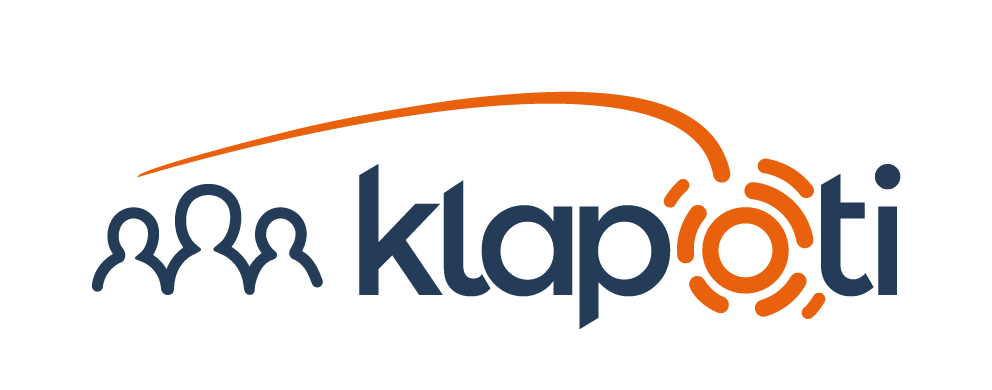The video transcription was edited for clarity purposes. If you prefer to watch the original version in French, it’s available below.
Can you tell us about your company’s mission?
I am Lucie Bailly, the founder of klapoti, a company I created in 2019 to promote teams’ commitment to the corporate strategy. One of the difficulties I had, when I was Director of Transformation, is this: “How do you get employees to adhere to a strategic plan, knowing that for them, it’s often non-tangible?”
Since the years 2000-2010, the digital transformation has arrived, and I find that it has led to a lack of accountability at all levels of company management. For the company leadership, defining a three-year strategic plan was very difficult in the context of digital transformation, and I think they tried to be ultra-secure by locking everything and going down in decision-making.
With klapoti, we try to put everyone back at their level, for example, the company leadership on its vision, the middle-management on accountability, and the employees on operational actions.
What are the keys to a successful transformation in your experience?
– If you want your strategic transformation plan to unfold, you must create the conditions at the outset. You must also accept that this transformation will have a cost. It means freeing up the time of employees who are already operational and getting them out of their daily tasks over short periods to implement other things, impact and participate.
– Who are the people best able to carry out the operational declination? Not external consultants, but employees. This way, the leadership vision will receive feedback from people in the field, and the tactical and operational actions they will take will be super tangible.
– We will make a call for volunteering, and every time we collect names that the sponsors are surprised to find. Because employees are allowed to act and are offered to contribute, they get involved. So, we always try to look for profiles a little different, which will bring something else; often, those profiles are much more introverted than the 10% ultra-committed, yet they have many ideas. And when we put them in collective intelligence workshops, they all co-construct together quite extraordinary things, have super practical proposals, and after are very demanding to become ambassadors.
– A transformation plan or an operational articulation of a strategic plan should not be siloed, and this is part of the method. We break down silos between teams, getting them to work on specific topics to find solutions and ask them to implement them. It allows things to be built progressively, keeping a dynamic that involves as many employees as possible so that the teams do not run out of steam.
Which method have you tested and developed?
The leadership will define its strategic objectives, and it can also create sub-objectives that are work orientations. The idea is to have the tactical objectives co-created to translate them into operational actions.
The first lever is coaching them to the klapoti method that allows, in a fairly short period, called the klapoti experience (between two and five months), to trigger the first changes, to call on volunteers in the company to participate in the operational articulation of the strategic plan.
Then, we will use the klapoti digital application to boost change within the entire structure. The name Klapoti came to me quite quickly after creating the company. It’s a ripple, like a drop of water that falls and waves, and that was really what I wanted to introduce in the application: this drop of water that falls is the strategy that infuses throughout the company. All employees can access the strategic plan, visualize the actions carried out, and contribute by submitting ideas, joining existing teams, or proposing themselves to form groups and action plans validated beforehand. I think allowing the teams to visualize the changing things creates a crucial dynamic in a transformation plan since it will take a long time.
Digital will allow us to keep this dynamic long-term through notifications, access to information, knowing that things are moving, who is working on a particular subject, etc. This notion of transparency given to employees guarantees adherence and is behind the will to participate.
If you always take the ultra-committed 10% collaborators, there is a moment when they run out of steam. To avoid exhaustion, we use two steps in klapoti’s method:
- Break down the tactical objectives, over short-term periods, between one and three months, so that the teams do not get tired and see a result, so we talk about quick wins.
- Make sure that “the wheel turns” and it is not always the same collaborators who contribute but that there is a snowball effect, that the wheel turns with their colleagues and that they come back if they want some time later.
In the platform, we have a KPI that ensures that engagement grows and that the participation of employees at the strategy is crescendo. Displaying this indicator to the completeness of employees and leadership is a way of showing our commitment to their success.
Can you give us examples of customer projects?
There is this leader who told me that in five months, we had managed to do what they had not been able to do for 18 months, so for me, it is a real success. He has several strategic objectives in his four-year plan, one of which was the creation of new offerings. We took on board ten employees, from marketing, sales, production, pre-sales, in five co-creation workshops over five months, one per month. And during that period, we presented to the Board of Management five potential offerings, which allowed them to validate and decide on the implementation and launch of a new product.
Another example: why did a CIO come to us? In the end, the CIO is actively involved in his company’s transformation, and his CEO had asked him to find a solution to drive the change. But a business-oriented solution, to manage all the actions and measure the impact. Typically, in an IT team, you use MS Project, or Trello if the company is small. Rightly, the CIO said, “We can’t put MS Project for the business transformation project. Managers will hate it! ». And so, he was looking for a much more engaging application, much more design, much lighter than MS Project because we do not do resource management, task management by time, duration, etc.


